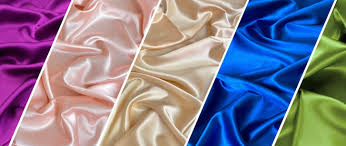Satin has always been a go-to for designers seeking elegance and flow, but modern-day projects often call for a bit more flexibility. That’s where the stretch version of satin comes into play. Whether you’re creating an evening gown, dancewear, or a custom dress for a client, selecting the right type of satin with stretch is crucial for both form and function.
This guide will help you make an informed decision when choosing satin that not only looks great but also performs beautifully in your sewing projects.
Understanding What Makes It Unique
Before diving into textures and colors, it’s essential to know what sets this fabric apart. Traditional satin is known for its glossy surface and luxurious drape. The stretch variant, however, is typically blended with materials like spandex or elastane. This small but mighty addition transforms a classic textile into something much more versatile.
The stretch provides comfort and a better fit, especially for garments that are form-fitting or require movement. Think bodycon dresses, costumes, and even lingerie. You get all the visual appeal of satin with added wearability.
Factors to Consider When Choosing Stretch Satin
1. Fabric Weight and Drape
One of the first things to check is the weight of the fabric. Lightweight options are perfect for blouses, linings, and lingerie, while medium-weight versions are better suited for dresses and skirts that need a bit more structure. Heavy stretch satin works well for gowns, structured tops, and even suits.
A good rule of thumb is: the more structured your garment needs to be, the heavier your satin should be. Keep in mind, however, that heavier fabrics might be slightly more challenging to work with if you’re a beginner.
2. Stretch Direction and Percentage
Not all satin with stretch behaves the same. Some are one-way stretch, while others offer two-way or even four-way stretch. If you’re designing a garment that hugs the body or needs to accommodate movement, opt for a two-way or four-way stretch.
Always check the stretch percentage, too. A fabric with 10–15% stretch works well for casual garments, while those with 25% or more are ideal for performance wear or fitted designs.
3. Sheen and Finish
The visual appeal of satin comes from its shine, but not all finishes are created equal. Glossy finishes offer high shine, reflecting light dramatically, which is perfect for evening and formal wear. Matte finishes, on the other hand, provide a more modern and understated elegance, often preferred for professional or minimalist designs.
When shopping online or in-store, always look at the fabric under different lighting conditions to get a true sense of how it will appear in real life.
4. Color Selection
Color is more than just a visual choice—it also affects how the fabric complements different skin tones, occasions, and seasons. Rich, bold tones like emerald green, deep burgundy, or royal blue create a dramatic effect. Meanwhile, soft pastels, champagne, or classic ivory are excellent for bridal or spring pieces.
Make sure to consider the dye quality and colorfastness, especially if your garment will be worn frequently or washed often. High-quality stretch fabrics should retain their color over time without fading or bleeding.
5. Compatibility with Your Pattern
Not every sewing pattern works well with stretch fabrics. Always verify if your chosen pattern is designed for stretch material. If it’s not, you may need to adjust the sizing or construction techniques to account for the added flexibility.
Stretch materials are often used for body-hugging designs, so they work best with patterns that are designed with negative ease—meaning the garment is smaller than the body and stretches to fit.
Sewing Tips for Best Results
Working with satin that stretches has its own challenges. The fabric tends to be slippery and may shift under your sewing machine. Here are a few tips to get the best results:
-
Use a walking foot to help feed the fabric evenly.
-
Select the right needle, such as a ballpoint or microtex needle, to avoid snagging.
-
Stabilize seams with interfacing or stay tape where needed.
-
Pin generously or use fabric clips to hold layers in place.
Practicing on a scrap piece before you start your project can help you fine-tune your settings and technique.
Ideal Projects for This Fabric Type
Stretch satin works beautifully in a wide range of garments and creative applications:
-
Evening and cocktail dresses
-
Bridal and bridesmaid gowns
-
Lingerie and nightwear
-
Skirts and blouses
-
Stage costumes and dancewear
Its combination of sheen, drape, and stretch makes it a truly versatile material.
Where to Buy Quality Options
When sourcing fabric, quality is everything. At Kiki Textiles, we offer a premium selection of stretch satin fabric in a wide range of colors, weights, and finishes. Whether you’re a professional designer or a DIY enthusiast, our materials are curated to help you achieve stunning results every time.
Final Thoughts
Choosing the right stretch satin fabric can transform your design from good to great. By understanding fabric weight, stretch capacity, finish, and color, you’ll be better equipped to create garments that are both comfortable and beautiful. Don’t rush the selection process—take your time to find the perfect match for your project.
Ready to get started? Explore high-quality fabrics tailored for every style and need at Kiki Textiles—where luxury meets functionality.









